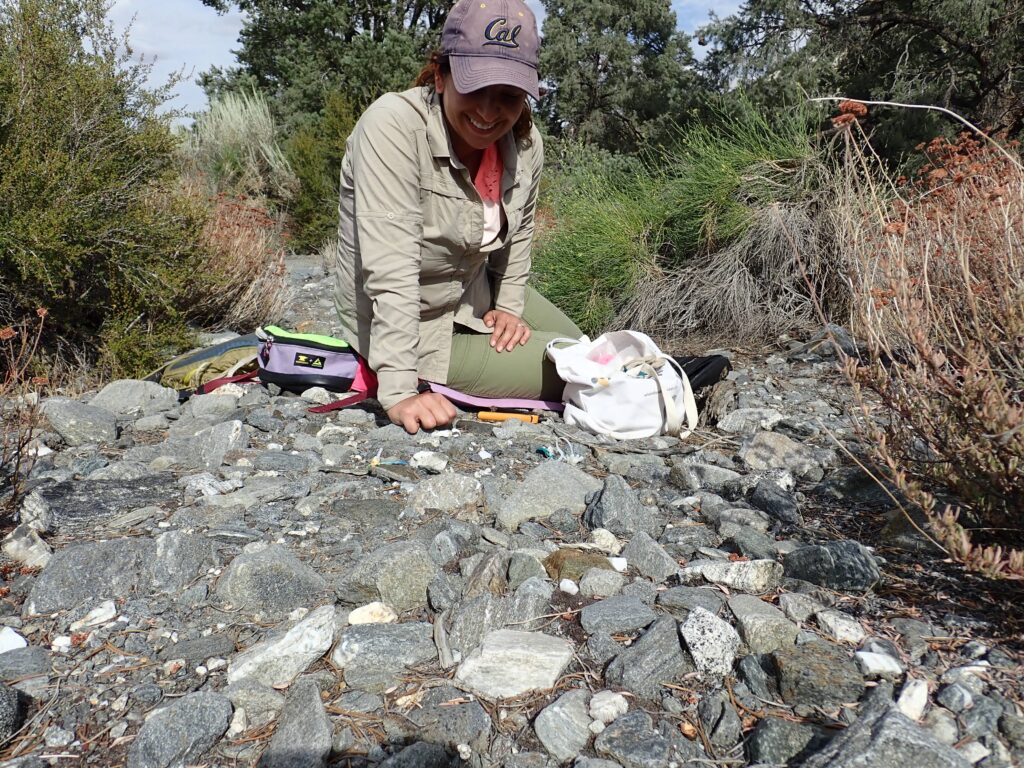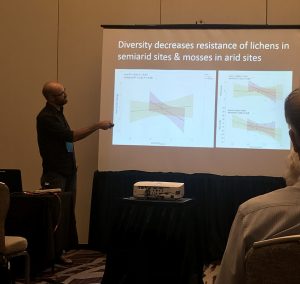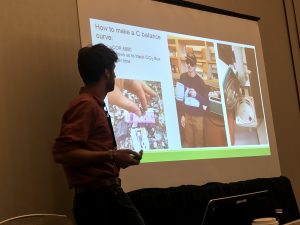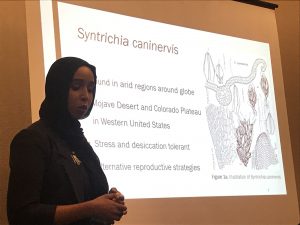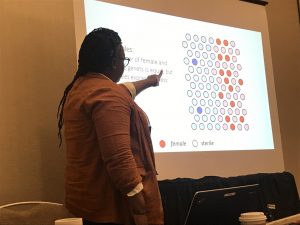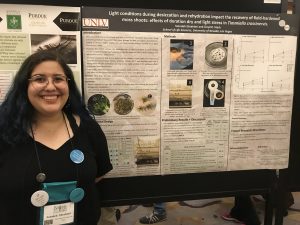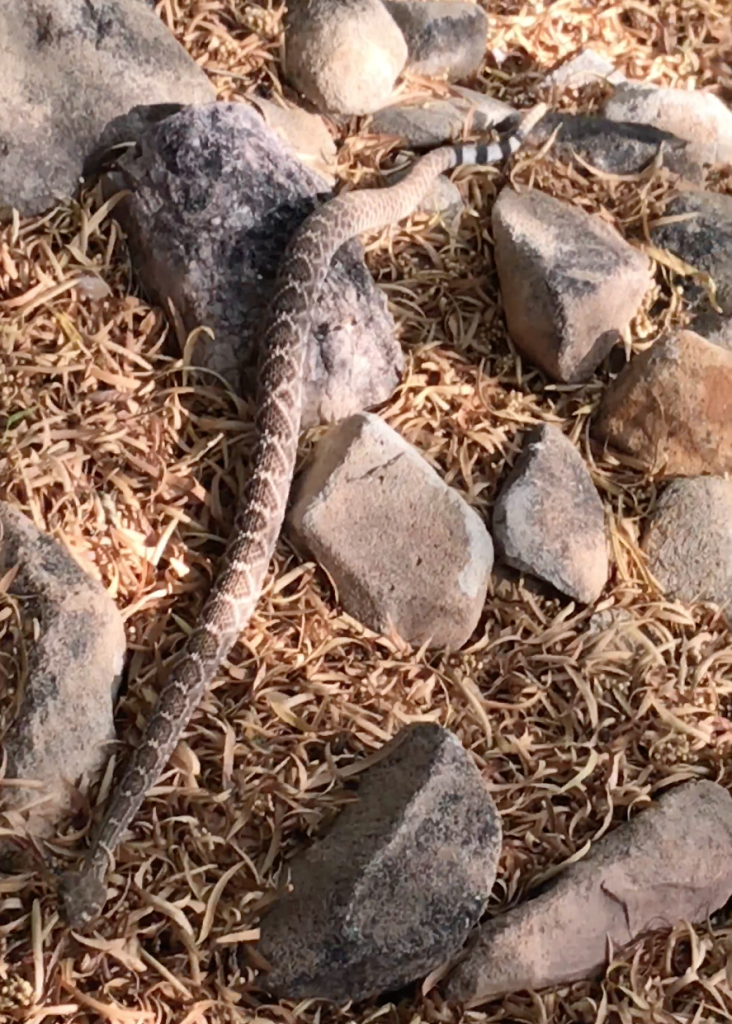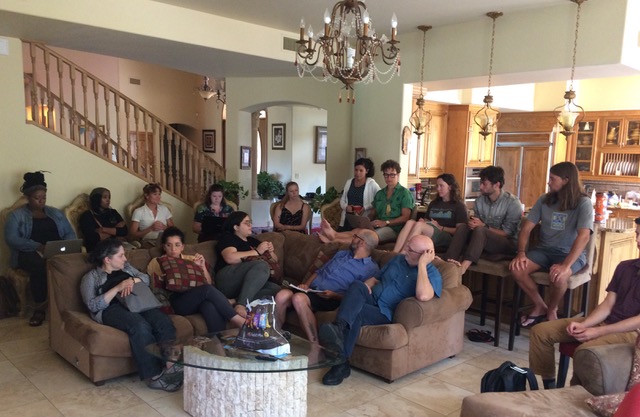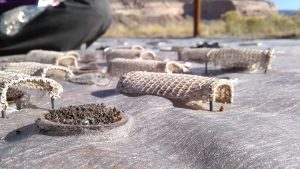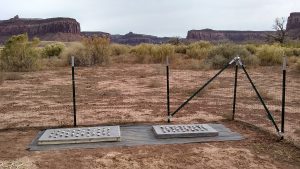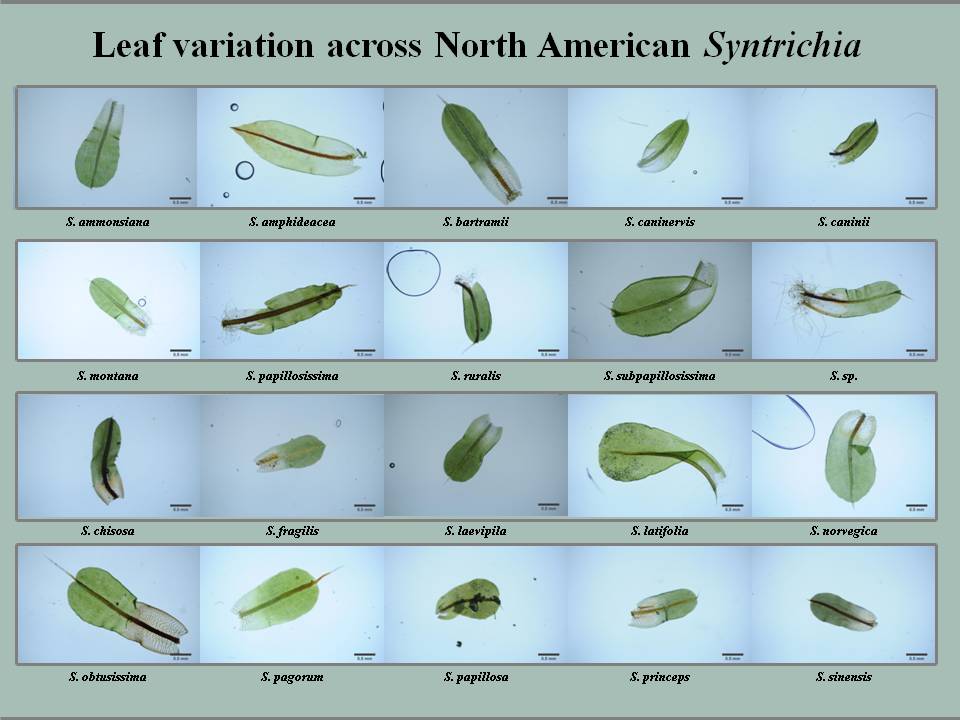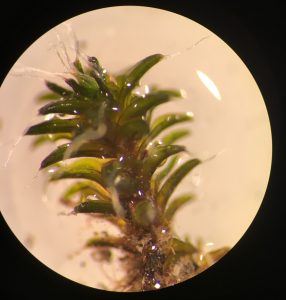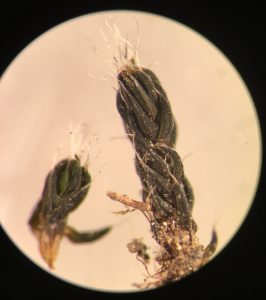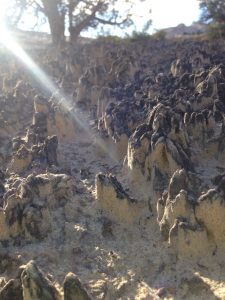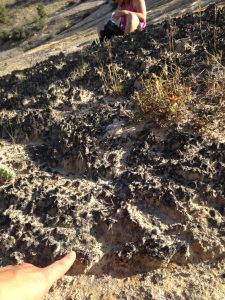3DMoss PI Kirsten Fisher and graduate student Jenna Ekwealor recently completed a project they started back in 2014. After finding that Syntrichia caninervis can survive completely under quartz rocks, they set out to compare the abiotic conditions and community composition of the unique Mojave hypolithic moss habitat with that of the adjacent soil surface. The article on this project was published in PLOS ONE and Bob Sanders of UC Berkeley wrote up a great story covering it on the UC Berkeley News page.
Be sure to also check out the video in the supplementary material of the open access PLOS ONE article. In addition to Kirsten Fisher, you can also hear the voices of 3DMoss PIs Brent Mishler and Llo Stark!

